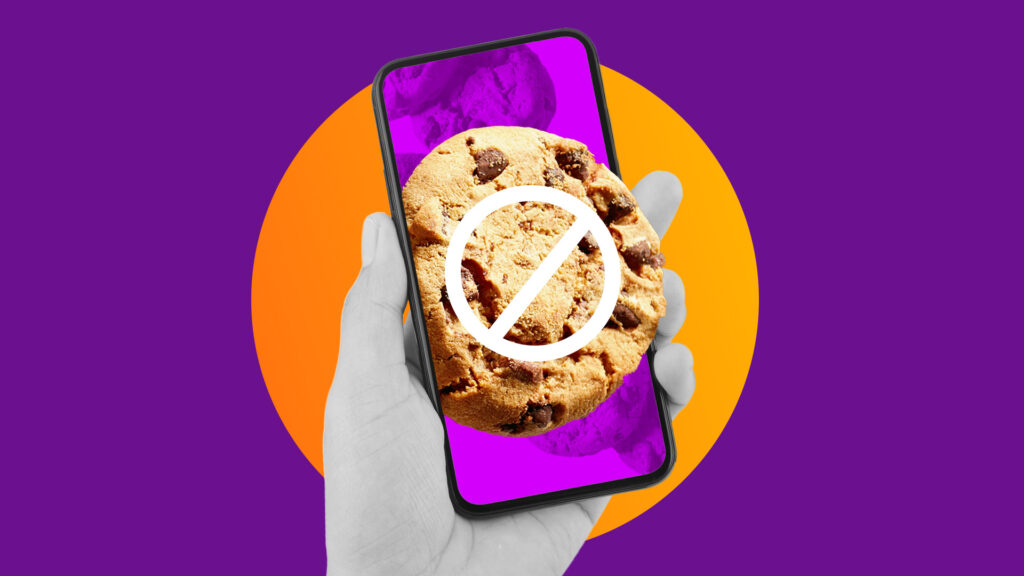From the MNTN Slack: What Netflix’s Q1 Report Signals About the Future of Streaming
by Cat Hausler
8 Min Read
CES 2024: Stagwell (STGW) and MNTN Announce Partnership in Unified Performance SolutionsLearn More

8 Min Read
If you’re a marketer, you’ve probably already heard the big news: Google has announced that Chrome will officially start unwinding its support for third-party cookies in 2024. For years, brands have relied on cookies to collect valuable data about consumers and retarget them with advertisements after they leave the brands’ sites. Moreover, third-party cookies have helped businesses improve their user experience and keep up their competitive edge. Has your organization decided what it’ll do next?
Fortunately, there is life in marketing attribution after cookies. Cookieless attribution, as a data collection technique, offers a more privacy-driven way to compile and utilize user data. Even better, cookieless attribution offers unique opportunities to engage potential customers in a way that more directly appeals to them, specifically through Connected TV (CTV) advertising.
Curious? Here, we’ll break down everything you need to know about cookieless attribution—and how to get started.
Cookieless attribution uses innovative technologies and methodologies to track user interactions and secure conversions. It addresses the limitations of cookie-based attribution while still complying with data privacy laws like the General Data Protection Regulation (GDPR) and California Consumer Privacy Act (CCPA).
Instead of using cookies, cookieless attribution focuses on collecting data anonymously through methods like device fingerprinting and deterministic attribution. All of these approaches offer their own advantages and align with different business needs.
Though cookie-based attribution has been the go-to for many marketers over the years, its challenges existed long before Google announced it was phasing out the technology.
That’s not to say that cookieless attribution doesn’t come without its own difficulties, too.
We’ve discussed the challenges of cookieless attribution, but what about its benefits?
First, while standardization across platforms might still be limited, cookieless attribution can help you find more consistency tracking across different devices. Users can block cookie tracking on certain websites or switch it off altogether; however, cookieless attribution uses different methods to collect data more holistically and privately, without an opt-out option (for now, at least).
Secondly, cookieless attribution leads to reduced ad waste. With more refined targeting, you can focus your budget on what actually works with the right audience. Plus, you’ll provide an enhanced user experience by sharing more relevant content with your audience, leading to more conversions and maximizing your ROI.
Finally, your business will be at the forefront of innovation by exploring a future in which cookie-based data collection methods are obsolete. It can enhance your brand’s reputation as a forward-thinking organization and build up that all-important customer trust.
So now that you know the advantages and disadvantages of cookieless attribution, the question is this: How does it work, exactly?
The digital landscape is shifting, making cookieless attribution a worthy privacy-centered approach. This method avoids traditional cookies, using privacy-conscious alternatives like device fingerprinting instead. By respecting user consent and using more secure data-handling techniques, cookieless attribution maintains that delicate balance between effective marketing and privacy protection, strengthening user trust in the process.
Let’s take a look at device fingerprinting, which allows every visitor to be identified through a specific set of data that their browsers pass on to a website. The data can include:
In this method, user actions are directly linked and attributed to specific marketing touchpoints through known identifiers, such as log-in information or customer IDs. This approach facilitates highly reliable attribution by directly connecting actions to a user’s corresponding touchpoints without cookies’ limitations. Deterministic cookieless attribution is a privacy-conscious approach that aligns with users’ preferences while offering marketers a clear and precise understanding of how their campaigns influence behaviors.
Attribution modeling involves determining what impact various marketing touchpoints have on users’ actions. It explores the impact of different interactions across various channels. After that, measurement comes in, with marketers analyzing the data and gaining a better understanding of where they can best allocate their resources, focus their budget, and optimize their marketing campaigns for the ultimate effectiveness.
CTV advertising shows ads on smart TVs and streaming services connected to the internet. As nearly 80% of all U.S. households are subscribed to at least one streaming service, this is a perfect opportunity for marketers to create highly targeted marketing campaigns without compromising consumers’ privacy.
CTV advertising uses a wide variety of cookieless attribution methods to collect user data, including:
If you’re looking to engage a specific target audience, CTV prospecting is an ideal strategy. CTV has become a performance marketing platform similar to paid search and social advertising—but with more accurate metrics and KPIs for success. That’s why at MNTN, we call CTV advertising Performance TV.
MNTN’s powerful, intuitive platform takes the guesswork out of performance TV ads. Marketers can easily set up campaigns in minutes by uploading creative material, choosing from tens of thousands of audiences to target, and launching campaigns with zero wait time. Once TV ads are running, advertisers have access to a gold mine of data that can power tailor-made campaigns for customers who are actively interested in the types of products or services they’re selling.
In a world where privacy has become a priority for millions of users, cookieless attribution is a forward-thinking, consumer-driven solution. By forgoing the old, traditional methods of cookie-based attribution, you can track users’ interactions, understand their journeys, and attribute their actions to specific touchpoints, all while prioritizing privacy and trust. You also get deeper insights into cross-device tracking, a huge challenge that the old cookie-based methods couldn’t overcome.
If you’re excited to take on cookieless attribution but aren’t sure of where or how to start, our experts can set you up on the right foot. Contact us to start transforming the way you collect data in a more privacy-focused world.
Subscribe to the report Apple, Amazon, NBC and more use to get their CTV news.